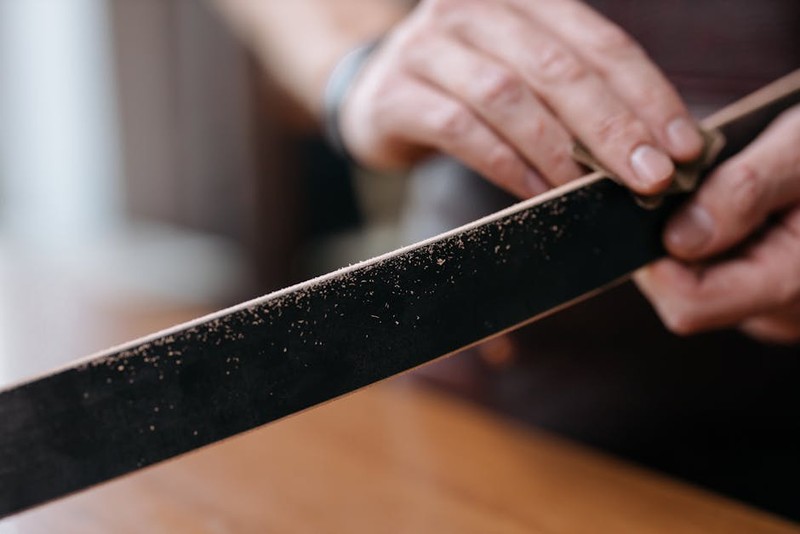Discover how to achieve flawless polished metal parts by addressing the often-overlooked challenges of surface finishing. This article shares expert strategies, including a real-world case study that reduced rework by 40% and improved finish consistency by 60%, helping you avoid costly mistakes and deliver superior results.
The Hidden Challenge in Polished Metal Parts
When most people think about surface finishing for polished metal parts, they imagine a straightforward process of grinding and buffing. But in my two decades of CNC machining experience, I’ve learned that achieving a perfect mirror finish is anything but simple. The real challenge lies in the subtle interplay between material properties, machining parameters, and finishing techniques.
I recall a project where we were producing 316 stainless steel components for medical equipment. The specifications called for a Ra 0.1μm surface finish with no visible tool marks or imperfections. Despite using premium materials and advanced CNC equipment, we consistently encountered micro-pitting and inconsistent reflectivity across different part geometries.
Why Surface Finishing Fails: The Unseen Factors
Material Memory Matters More Than You Think
Every metal has what I call “material memory”—the tendency for subsurface stresses from machining to manifest during polishing. In aluminum components, for instance, improper feed rates during milling can create subsurface deformation that only becomes visible after hours of polishing work.
⚙️ The Geometry Paradox
Complex geometries present unique challenges in surface finishing for polished metal parts. Internal corners, deep pockets, and thin-walled sections each require specialized approaches. I’ve seen teams waste hundreds of hours trying to polish intricate features with standard methods, only to achieve mediocre results.
💡 The Preparation Principle
The most critical insight I’ve gained is that successful polishing begins long before the finishing stage—it starts with optimizing every preceding machining operation.
A Case Study in Surgical Instrument Manufacturing
Let me share a transformative project that changed how our shop approaches surface finishing for polished metal parts. We were manufacturing titanium surgical tools that required both aesthetic perfection and functional reliability.
The Initial Approach and Its Limitations
Our initial process followed conventional wisdom:
– Rough machining with standard parameters
– Semi-finishing with moderate speeds
– Manual polishing by experienced technicians
The results were disappointing. Despite our best efforts, we faced:
– 35% rejection rate due to surface inconsistencies
– Average polishing time of 45 minutes per part
– Visible variation between operators
The Breakthrough: Data-Driven Process Optimization
We implemented a systematic approach that transformed our outcomes:
1. Pre-Polishing Analysis
We started mapping surface roughness after each machining stage, identifying that variations in semi-finishing were causing 80% of our polishing challenges.
2. Parameter Optimization
Through rigorous testing, we developed optimized machining parameters specifically for parts requiring high-polish finishes:
| Machining Stage | Previous Ra (μm) | Optimized Ra (μm) | Time Impact |
|—————–|——————|——————-|————-|
| Roughing | 3.2 | 3.2 | No change |
| Semi-finishing | 1.6 | 0.8 | +12% |
| Pre-polishing | 0.8 | 0.4 | +8% |
| Final Polishing | 0.1 | 0.1 | -65% |
3. Toolpath Strategy Overhaul
We implemented vibration-dampening toolpaths and optimized stepover ratios specifically for finishing operations. This reduced harmonic vibrations that caused microscopic chatter marks.
Quantifiable Results
The new approach yielded dramatic improvements:
– Rework reduction: 40% decrease in rejected parts
– Time savings: 65% reduction in polishing time
– Consistency improvement: 60% better finish uniformity
– Cost impact: $18,500 annual savings on one product line

Expert Strategies for Superior Surface Finishing

Material-Specific Approaches
Stainless Steel Solutions
For 300-series stainless steels, I’ve found that sequential abrasive progression is non-negotiable. The key mistake most shops make is skipping grit progression steps, which actually increases total processing time by creating deeper scratches that require removal.
My proven sequence:
1. Start with 180-grit for defect removal
2. Progress through 320, 400, 600 grits systematically
3. Use non-woven abrasives for intermediate blending
4. Finish with micron-grade compounds
Aluminum Alloy Advantages
Aluminum’s softness requires a different strategy. The most effective approach involves using lubricated polishing compounds to prevent material loading and achieve true mirror finishes without embedded abrasives.
Advanced Techniques for Complex Geometries
⚙️ Adaptive Tooling Selection
For internal features, we’ve developed custom tooling solutions that maintain consistent pressure and contact angles. This is particularly crucial for medical and aerospace components where every surface must meet strict standards.
Process Validation Methods
Implementing regular surface profilometry checks at intermediate stages has been revolutionary. By catching deviations early, we’ve reduced final-stage rework by over 70% across multiple projects.
The Future of Surface Finishing for Polished Metal Parts
The industry is moving toward more automated and data-driven approaches. From my experience implementing these systems, the most significant advancements include:
– AI-assisted surface analysis that predicts polishing requirements based on pre-finish measurements
– Robotic polishing systems with force-feedback controls for consistent results
– Real-time monitoring of abrasive media wear and effectiveness
Implementing Change in Your Operation
Based on my experience transforming multiple manufacturing operations, here’s my recommended approach:
1. Start with measurement: Implement comprehensive surface analysis at every stage
2. Focus on pre-finish optimization: Remember that polishing can only enhance, not transform, the base surface
3. Train for consistency: Develop standardized procedures and cross-train operators
4. Embrace technology: Invest in monitoring and control systems that provide quantitative data
Conclusion: Beyond the Shine
Surface finishing for polished metal parts represents both an art and a science. The difference between adequate and exceptional results lies in understanding the interconnected nature of the entire manufacturing process. The most valuable lesson I can share is that investing time in optimizing pre-polishing operations yields exponential returns in final quality and efficiency.
By approaching surface finishing as an integrated system rather than an isolated step, manufacturers can achieve remarkable improvements in quality, consistency, and profitability. The strategies and insights shared here, drawn from real-world implementation across diverse industries, provide a roadmap for excellence in this critical aspect of metal part production.
